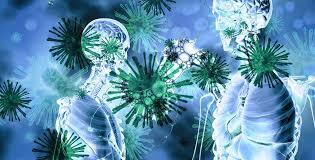Significance
Kaposi’s sarcoma–associated herpesvirus (KSHV) inhibitor of cyclic GMP–AMP synthase (cGAS) (KicGAS) is a major tegument protein of KSHV and crucial for the evasion of host immune responses. KicGAS self-assembles to function, yet the structural basis of assembly was unknown. Here, we present the crystal structure of KicGAS forming a higher order assembly. The structure reveals how oligomerization of KicGAS mediates multivalent interaction with DNA required for cGAS inhibition. Comparison with homologous protein structures reveals diverse oligomerization characteristics in addition to conserved features, highlighting divergence in virus evolution.
Abstract
Kaposi’s sarcoma–associated herpesvirus (KSHV) inhibitor of cyclic GMP–AMP synthase (cGAS) (KicGAS) encoded by ORF52 is a conserved major tegument protein of KSHV and the first reported viral inhibitor of cGAS. In our previous study, we found that KicGAS is highly oligomerized in solution and that oligomerization is required for its cooperative DNA binding and for inhibiting DNA-induced phase separation and activation of cGAS. However, how KicGAS oligomerizes remained unclear. Here, we present the crystal structure of KicGAS at 2.5 Å resolution, which reveals an “L”-shaped molecule with each arm of the L essentially formed by a single α helix (α1 and α2). Antiparallel dimerization of α2 helices from two KicGAS molecules leads to a unique “Z”-shaped dimer. Surprisingly, α1 is also a dimerization domain. It forms a parallel dimeric leucine zipper with the α1 from a neighboring dimer, leading to the formation of an infinite chain of KicGAS dimers. Residues involved in leucine zipper dimer formation are among the most conserved residues across ORF52 homologs of gammaherpesviruses. The self-oligomerization increases the valence and cooperativity of interaction with DNA. The resultant multivalent interaction is critical for the formation of liquid condensates with DNA and consequent sequestration of DNA from being sensed by cGAS, explaining its role in restricting cGAS activation. The structure presented here not only provides a mechanistic understanding of the function of KicGAS but also informs a molecular target for rational design of antivirals against KSHV and related viruses.







